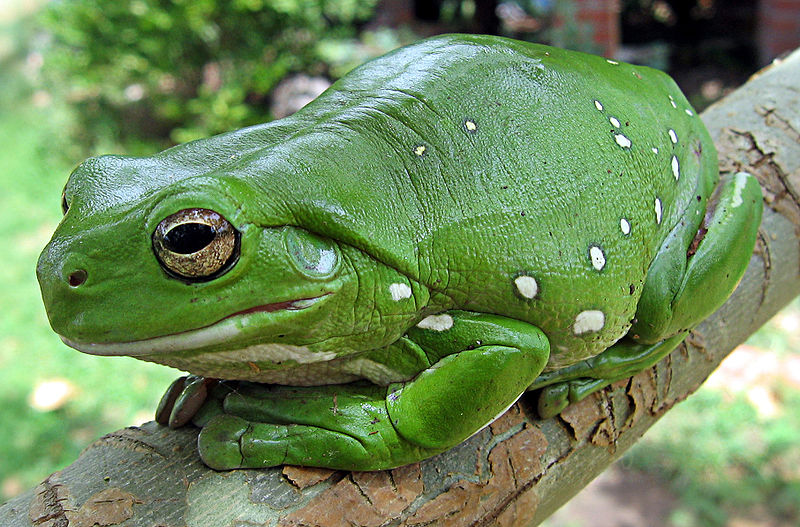Atrazine, a common herbicide, disrupts the sexual development of frogs

By David Baylo
The fertile US fields are flooded with atrazine, a white, odorless powder used as a herbicide. Farmers spread 36,000 tons of atrazine a year in their fields, 225 tons fly into the air or are washed away with the rains and even reach a distance of 1,000 kilometers from the field itself. But atrazine may have implications for sexuality: it turns male frogs into females.
Biologist Tyrone Hayes from the University of California at Berkeley published with his colleagues an article in the Proceedings of the National Academy of Sciences (PNAS) describing an experiment in which 40 frogs of the species Xenopus laevis, used for medical research, were exposed for three consecutive years to water containing atrazine at a concentration of 2.5 parts per billion, below For the permitted concentration in drinking water in the USA which is 3 parts per billion. As a result, among other effects, 30 frogs underwent chemical castration that prevented breeding. In addition, four male frogs underwent an actual sex change and became females.
These frogs have mated with other males and produced fertile eggs, even though they are genetically male. Only six frogs that participated in the experiment showed resistance to atrazine, or at least exhibited normal sexual behavior.
To be safe, the researchers used frogs that carry only the ZZ sex chromosome. According to Hays, in previous experiments "when we received bisexual frogs (hermaphrodites), we could not tell whether they were males with ovaries or females with testes. Using only ZZ males assured us that any bisexual or female frog is truly a sex-changed male.” In frogs, males are characterized by a pair of ZZ chromosomes and females by ZW chromosomes, unlike XX (for females) and XY (for males) that characterize humans.
The person responsible for the sex change is probably aromatase, a protein that encourages the production of the female hormone estrogen, which causes the originally male gonads to turn into ovaries. Atrazine is thought to stimulate aromatase production.
Hayes began researching atrazine many years ago. In 1990 he received research funding from the company that produces the herbicide, now known as Syngenta. Already at the time, the suspicion arose that the substance disrupts the action of natural hormones in animals and even in humans. These suspicions led to a flood of research on the subject. Some have confirmed the claim that amphibians, such as frogs, suffer from exposure to atrazine, some have found no effect, and some even show that the sperm count in men living in agricultural areas is lower. In the US, you can find atrazine in 57% of the rivers, according to the US Geological Survey. (The material is also common in Israel - the editors.)
However, the experiment conducted by Hays also raises reservations. Biologist Werner Klos from the Humboldt University in Berlin claims that the samples may have been contaminated with substances that disrupt the functioning of the endocrine system, for example bisphenol A (BPA) that leaks from plastic containers and may be released during the study. He also questions why the level of exposure was uniform in all the experiments and criticizes Heiss for not measuring the concentration of the female hormone among the frogs that were affected by the substance. However, it should be noted that Cloas also conducted a study on atrazine on behalf of Syngenta, and found that in concentrations similar to those in which Hayes worked, the substance had no effect on frogs of the same species.
But in the natural habitat of these frogs in Africa it does not seem to have a negative effect. "In the last 45 years, atrazine has been widely used in South Africa, but our research shows that these frogs thrive in agricultural areas as well as in remote areas, without any difference." This is according to the zoologist Louis Dupre from North-West University in South Africa. "If the presence of atrazine had such a harmful effect on the frogs of this species living in the wild, I'm sure we would have already noticed it."
And yet, the European Union banned the use of atrazine because the substance causes contamination of water sources. "I prefer the European policy which states that a degree of caution must be taken when it comes to chemicals entering the environment, and prohibiting the use of compounds that do not break down in nature." says Cloas.
The US Environmental Protection Agency (EPA) declared in 2006 that the use of atrazine was safe, but in October 2009 announced that it would conduct further research due to concerns about human health damage. This is because the substance affects many species of animals. "Atrazine causes an increase in the concentration of aromatase in zebrafish, goldfish, alligators, alligators, turtles, plaices and rats," Hayes says. "This is not just a frog problem."
On the same topic on the science website

2 תגובות
Hayes' research was initially funded by Syngenta, but Hayes left the research after being required by the company to disrupt the results of the study. Syngenta is a commercial company that uses atrazine in large quantities, but despite this, Hayes' research is presented as "controversial". Years after the study, a personal defamation campaign on behalf of the company against Heiss was revealed, which included uniting scientists and researchers at universities and personal surveillance of his family for the purpose of extortion. Encourages to research the subject in depth for each person. It is not known which studies were tampered with and which sources were bribed, but the chemical is still used and has been shown to cause sex change and smaller than average genitalia along with a host of female characteristics in male frogs.
I wonder if people who undergo gender reassignment surgery were exposed to the herbicide atrizine as children.